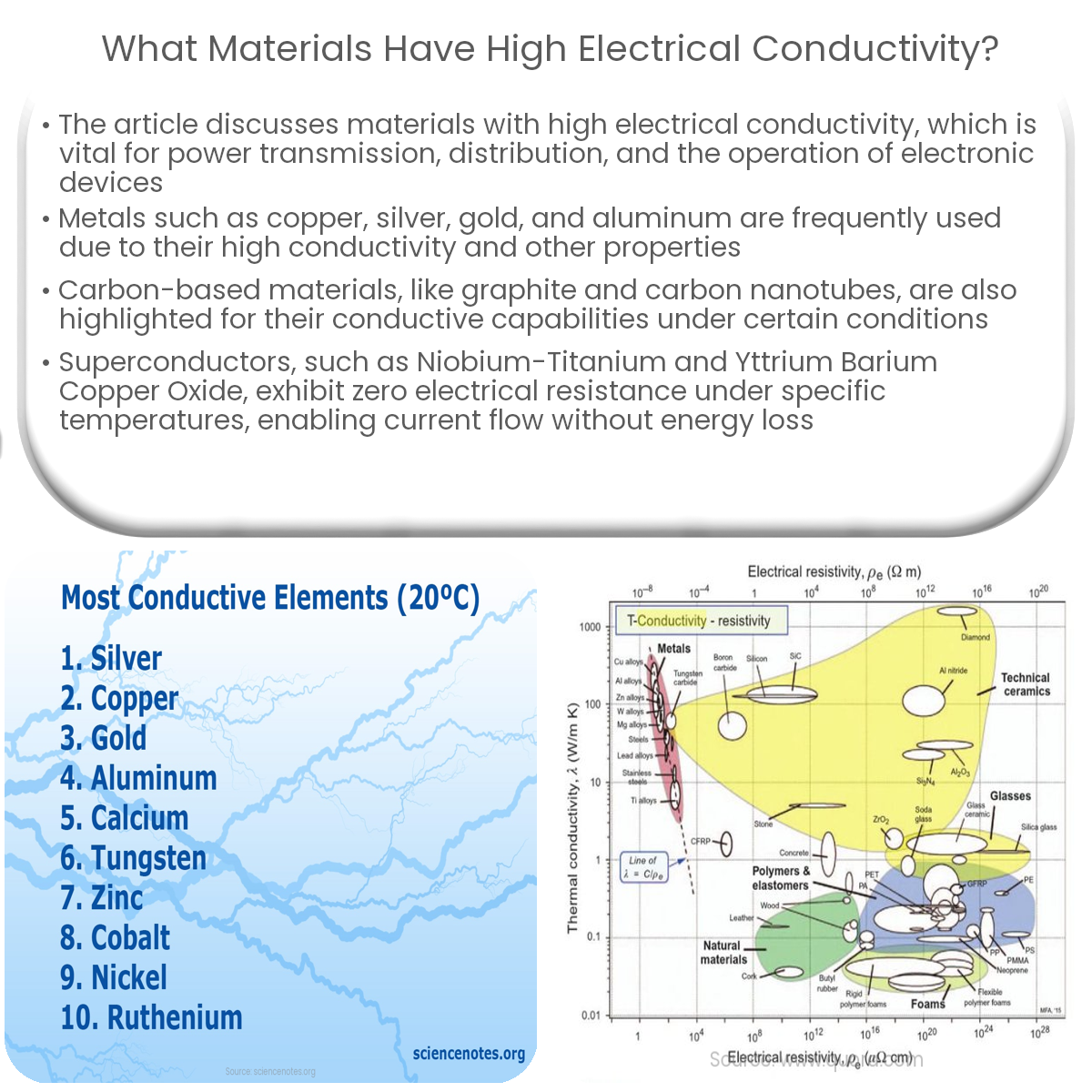Highly conductive materials include metals like copper, silver, gold, and aluminum, carbon-based materials like graphite, and superconductors.
Materials with High Electrical Conductivity
Electrical conductivity is a property that determines how well a material can conduct electric current. Some materials are better conductors than others due to their atomic structure, which allows the flow of electrons with minimal resistance. This article explores some of the materials with high electrical conductivity.
Metals
Metals are known for their excellent electrical conductivity, with some metals being more conductive than others. Here are a few examples:
- Copper: Copper is the most common and widely used conductor in electrical applications due to its high conductivity, relatively low cost, and corrosion resistance.
- Silver: Silver has the highest electrical conductivity among all metals. However, due to its high cost, it is less commonly used for electrical applications.
- Gold: Gold also has excellent electrical conductivity, but its high cost limits its use to specific applications, such as connector plating, where corrosion resistance is crucial.
- Aluminum: Aluminum has a lower conductivity than copper, but its light weight and low cost make it an attractive alternative for specific applications, such as high-voltage transmission lines.
Carbon-based Materials
Carbon-based materials, such as graphite and carbon nanotubes, exhibit high electrical conductivity under certain conditions:
- Graphite: Graphite is a form of carbon with a crystalline structure that allows for the efficient flow of electrons. It is used in batteries, lubricants, and various electrical applications.
- Carbon Nanotubes: Carbon nanotubes are cylindrical nanostructures composed of carbon atoms. They exhibit high electrical conductivity and strength, making them suitable for use in various electronic devices and components.
Superconductors
Superconductors are materials that exhibit zero electrical resistance when cooled below a certain critical temperature. This means they can carry an electric current without any energy loss. Examples of superconducting materials include:
- Niobium-Titanium (NbTi): NbTi is the most common superconducting material, used in applications such as MRI machines and particle accelerators.
- Yttrium Barium Copper Oxide (YBCO): YBCO is a high-temperature superconductor that can operate at temperatures achievable with liquid nitrogen, making it more practical for certain applications.
In summary, materials with high electrical conductivity are essential for efficient power transmission and distribution, as well as the functioning of various electronic devices. Metals, carbon-based materials, and superconductors are some examples of materials that exhibit high electrical conductivity.


